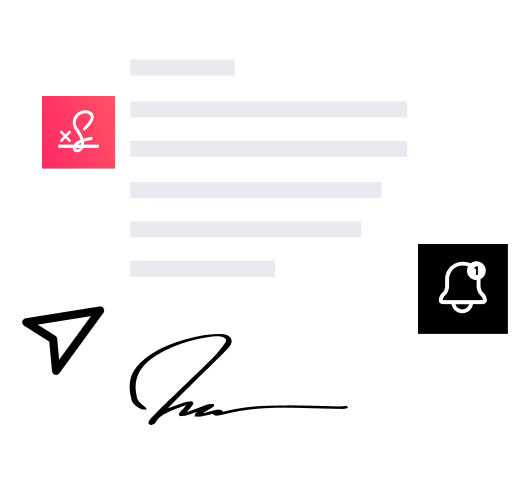Contract Management Workflows: Key Stages and Best Practices
Table of contents
- What is a contract management workflow?
- Why your business needs contract management workflows
- Key stages of a contract management workflow
- Benefits of a contract management workflow
- How contract management platforms streamline workflows
- Best practices for implementing a contract management workflow
- Choosing the right tools for your contract workflows
- Conclusion
Contracts are at the heart of every business — guiding partnerships, outlining obligations, and driving revenue. But managing them efficiently is no small feat. From tracking approvals to meeting deadlines, staying on top of contract workflows can feel overwhelming. That’s where a well-designed contract management workflow can make all the difference.
This article explores what a contract management workflow is, why it’s essential, and how you can implement one to save time, reduce risk, and improve collaboration.
What is a contract management workflow?
A contract management workflow is a structured process that guides contracts through their lifecycle — from drafting and negotiation to approval, execution, and renewal. It’s a way to streamline repetitive tasks, improve visibility, and make contract management more efficient.
Instead of juggling email chains, spreadsheets, and manual follow-ups, workflows automate key steps. This keeps contracts moving through the pipeline while ensuring nothing falls through the cracks.
Why your business needs contract management workflows
Managing contracts manually often leads to bottlenecks, missed deadlines, and increased breach of contract risks. A robust workflow eliminates these challenges by automating routine tasks and keeping all stakeholders aligned.
Here’s why workflows are essential for any business:
- Save time and reduce errors: Automating repetitive tasks — like sending approval requests or tracking deadlines — frees up your team for higher-value work.
- Enhance compliance: With clear steps and automatic reminders, you’ll stay on top of regulatory requirements and avoid costly mistakes.
- Improve collaboration: Centralized workflows make it easy for teams to access, review, and update contracts in real time, ensuring everyone is on the same page.
Key stages of a contract management workflow
Each stage of a contract’s journey matters. Here’s a breakdown of the main stages in a contract workflow:
1. Contract request
The process begins when a department or stakeholder submits a request for a new contract. This typically involves a form outlining the contract’s type, parties involved, and scope.
2. Drafting
Once approved, contract managers or legal teams draft the contract using templates. This consistency helps reduce errors and speeds up the process.
3. Review and negotiation
Next, the draft is sent for review and negotiation. Relevant stakeholders provide feedback, ensuring the contract meets business needs and complies with regulations.
4. Approval
After terms are finalized, the contract moves to the approval stage. This often involves department heads or finance teams. Automating this process speeds up the approval.
5. Signing
Once approved, the contract is signed, either with traditional signatures or electronic signatures. Electronic contract signature streamlines the signing process and make it fast and easy, no matter where you are.
6. Storage and tracking
After signing, the contract is stored in a central system where it can be tracked. Important dates, milestones, and obligations are tracked to avoid missed deadlines.
7. Monitoring and compliance
Throughout the contract’s lifecycle, you must monitor performance to meet contractual terms. Automated reminders and alerts keep teams informed about deadlines and obligations.
8. Renewal or termination
As contracts near their end, teams must decide whether to renew or terminate. Automated workflows help with this decision, ensuring nothing gets overlooked.
Benefits of a contract management workflow
By adopting workflows, businesses gain significant advantages:
- Faster approvals: Streamlined workflows eliminate unnecessary delays, helping you close deals or finalize agreements sooner.
- Reduced risk: Automated tracking of deadlines, obligations, and compliance requirements helps you avoid costly oversights.
- Greater transparency: With centralized workflows, everyone involved has visibility into the contract’s status and next steps.
- Improved scalability: As your business grows, workflows adapt to handle increased contract volume without adding complexity.
How contract management platforms streamline workflows
Contract management platforms help automate and simplify workflows, making the process easier to manage. Here’s how they help:
1. Automated workflows
Platforms like Concord automate contract management workflows, guiding contracts through each stage, from drafting to signing.
2. Centralized repository
With all contracts stored in one place, teams can access documents quickly and collaborate easily. No more lost files or endless email chains.
3. Integration with e-signature tools
E-signature integrations make signing contracts fast and convenient, eliminating the need for physical signatures.
4. Real-time alerts
Contract platforms provide real-time alerts for important deadlines, such as renewal dates, helping you stay ahead of compliance needs.
5. Data-driven insights
With AI contract management software, you get advanced reporting and analytics to track workflow performance, identify bottlenecks, and make data-driven improvements.
Best practices for implementing a contract management workflow
To make the most of your workflow, follow these best practices:
1. Standardize templates
Use standardized templates to save time and reduce errors. Templates also help ensure important clauses are always included.
2. Define roles and responsibilities
Make it clear who is responsible for each stage of the workflow. This keeps everyone accountable and prevents delays.
3. Use automation wisely
Automate repetitive tasks but leave critical steps, like legal reviews, to human oversight. Automation should complement your team, not replace them.
4. Train your team
Train your team on the workflow process and any software you use. Proper training leads to better efficiency and fewer mistakes.
Choosing the right tools for your contract workflows
A modern contract management platform is key to building effective workflows. Look for software that offers:
- Automation: Tools that handle tasks like routing, notifications, and reminders automatically.
- Integration: Seamless connections with your CRM or ERP tool to keep data consistent across platforms.
- User-friendly design: An intuitive interface that’s easy for all team members to use, even without extensive training.
- Reporting capabilities: The ability to track key metrics, like approval times or contract volumes, for better decision-making.
Managing contracts is key to staying compliant and reducing risks while building strong relationships with vendors and clients. A contract management workflow organizes every step in the contract lifecycle, making it easier to stay on top of deadlines and obligations.
Conclusion
A contract management workflow is essential for keeping contracts on track from start to finish. By using a structured process, organizations can improve efficiency, reduce risks, and strengthen compliance. Contract management platforms simplify this process with automation, centralized storage, and real-time alerts, making workflows even smoother.If you’re ready to improve your contract process, explore Concord’s contract management solutions. You’ll find tools that help you streamline workflows, reduce risks, and make better use of your team’s time.





